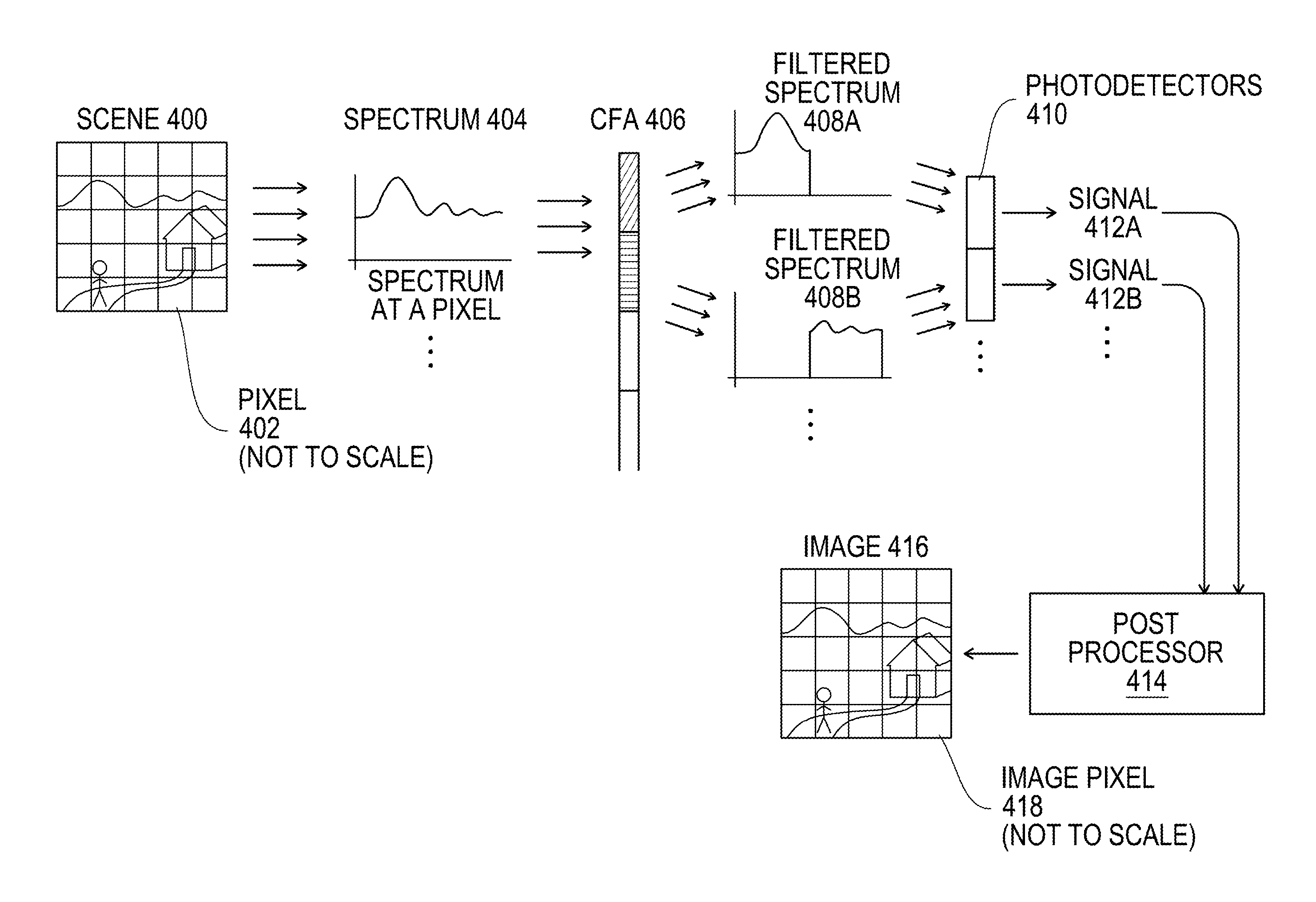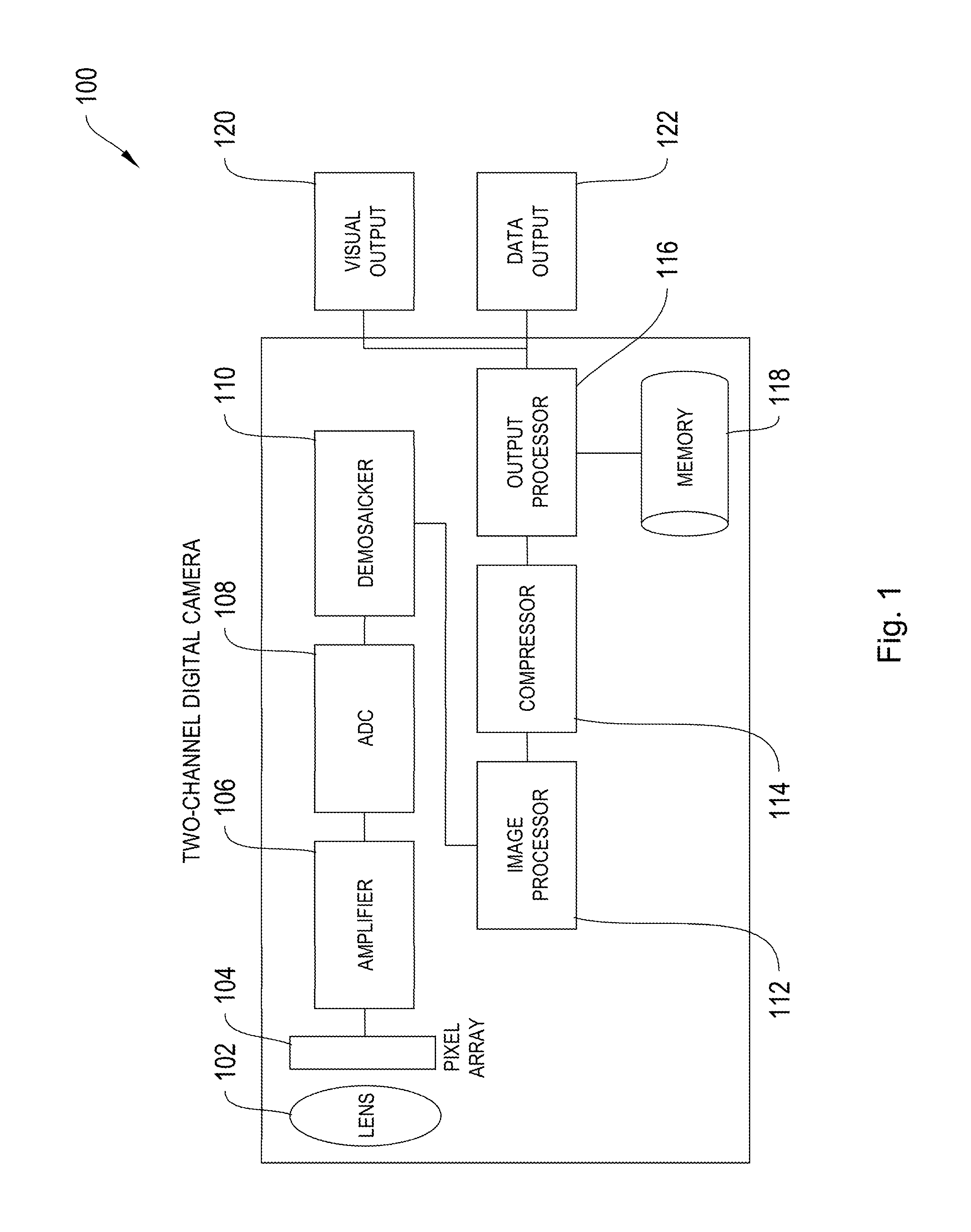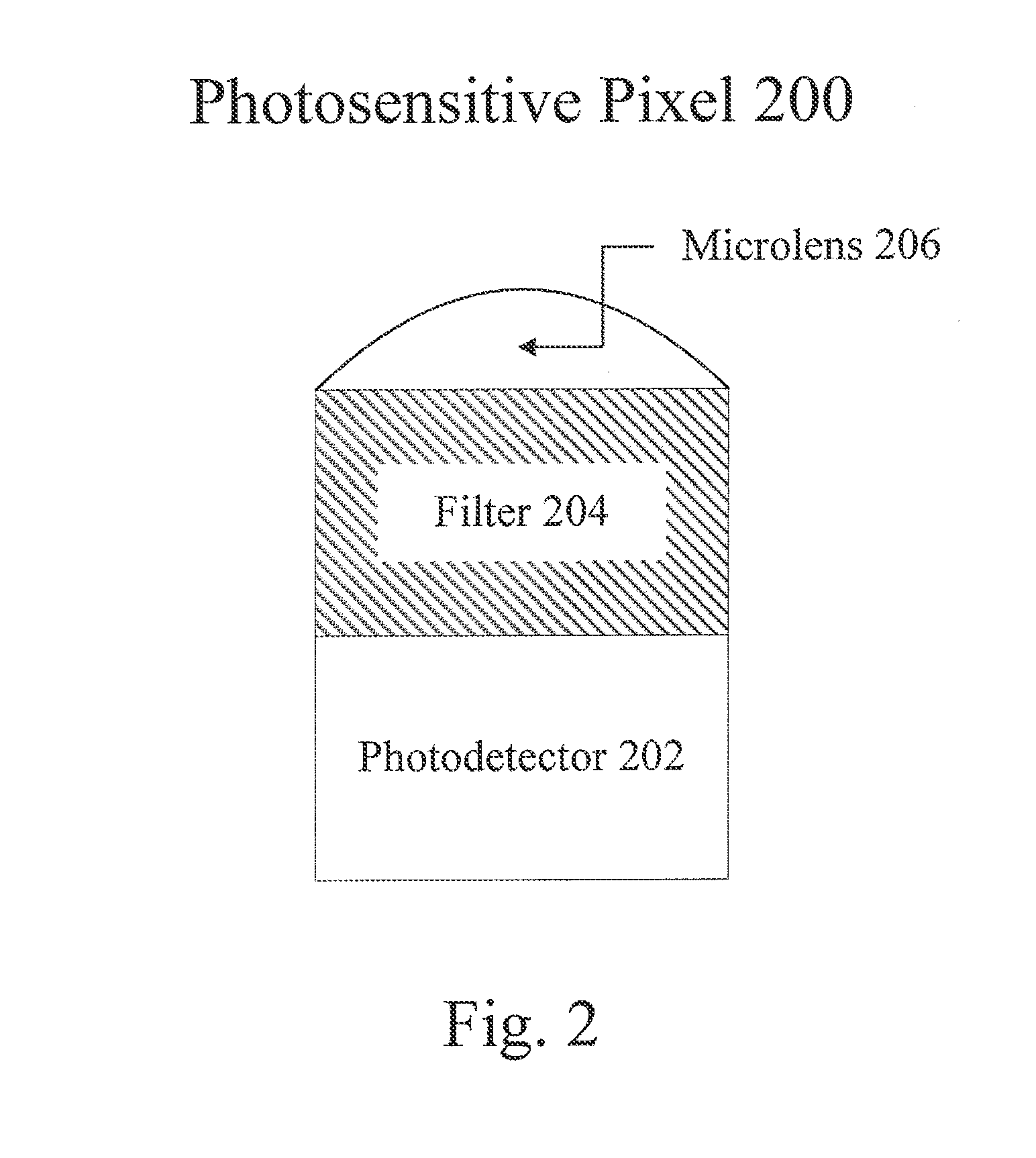Systems and methods for creating full-color image in low light
- Summary
- Abstract
- Description
- Claims
- Application Information
AI Technical Summary
Benefits of technology
Problems solved by technology
Method used
Image
Examples
Embodiment Construction
[0045]In the following description, numerous details are set forth for the purpose of explanation. However, one of ordinary skill in the art will realize that the implementations described herein may be practiced without the use of these specific details and that the implementations described herein may be modified, supplemented, or otherwise altered without departing from the scope of the invention.
[0046]The systems and methods described herein relate to generating color images using an array of photosensitive pixels. FIG. 1 provides an overview of an exemplary system used to generate such images using two light channels. FIG. 2 depicts a photosensitive pixel used within such a system, while FIG. 3 depicts an array of such pixels. FIG. 4 provides an overview of the image generation process, while FIG. 5 provides an exemplary method for generating a color image. FIG. 6 is a graph illustrating how colors may be distinguished in a two-channel imaging system. FIG. 7 presents an exempla...
PUM
 Login to View More
Login to View More Abstract
Description
Claims
Application Information
 Login to View More
Login to View More - R&D
- Intellectual Property
- Life Sciences
- Materials
- Tech Scout
- Unparalleled Data Quality
- Higher Quality Content
- 60% Fewer Hallucinations
Browse by: Latest US Patents, China's latest patents, Technical Efficacy Thesaurus, Application Domain, Technology Topic, Popular Technical Reports.
© 2025 PatSnap. All rights reserved.Legal|Privacy policy|Modern Slavery Act Transparency Statement|Sitemap|About US| Contact US: help@patsnap.com



